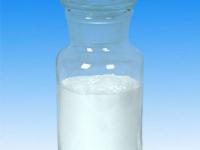In the process of water treatment, the formation of foam is often a headache. It not only affects treatment efficiency, but may also cause secondary pollution to water quality and even interfere with the normal operation of equipment. Therefore, as a chemical substance that can effectively inhibit and eliminate foam, defoamer plays a crucial role in the water treatment industry. This article aims to explore in depth the basic concepts, mechanisms of action, and importance of defoamers in water treatment.

Defoamer, as its name implies, is a chemical substance that can quickly eliminate or inhibit the formation of foam on the liquid surface. They destroy the stability of foam and cause bubbles to merge and break, so as to achieve defoaming effect. According to their composition and properties, defoamers can be divided into various types such as organosilicon, polyether, mineral oil, fatty acid, etc.
Surface tension reduction : Defoamer molecules can rapidly diffuse to the foam surface, reducing the surface tension of the liquid, making the foam film thin and easy to break.
Spreading and penetration : Some defoamers have good spreading and permeability, can penetrate into the interior of foam, and destroy the structure of the bubble wall.
Foaming inhibition : Some defoamers also have the ability to inhibit the generation of new foam, and prevent the regeneration of foam by persisting in the liquid.
The use of defoamers in water treatment is of great significance for improving treatment efficiency, protecting equipment, and ensuring water quality safety. It can effectively reduce the treatment obstacles caused by foam, such as blocking the pipeline and affecting the aeration effect, so as to ensure the smooth operation of the whole water treatment system.

 English
English
 Chinese
Chinese Vietnamese
Vietnamese
 HOME
HOME
 PRODUCT
PRODUCT
 NEWS
NEWS
 CONTACT
CONTACT


